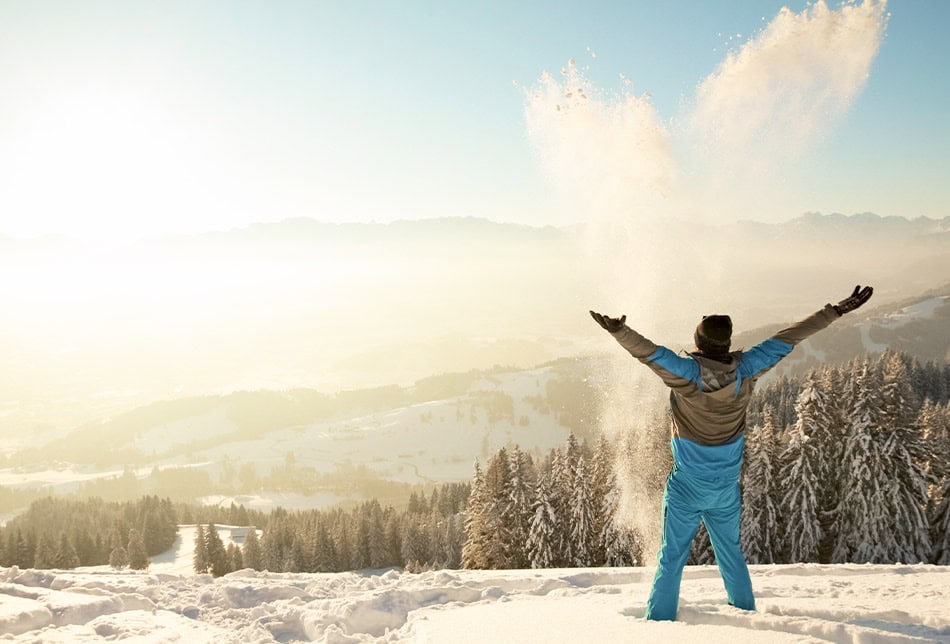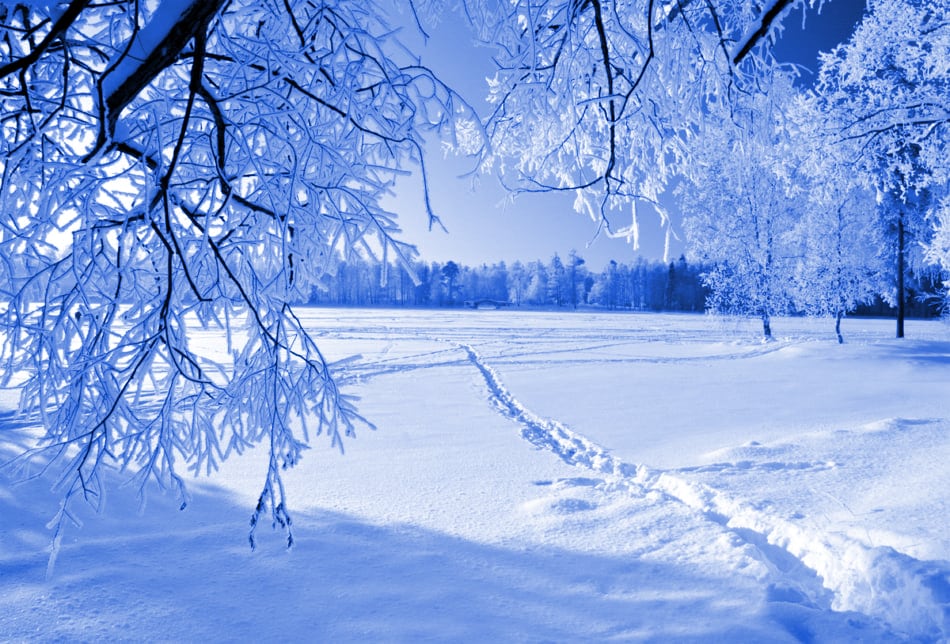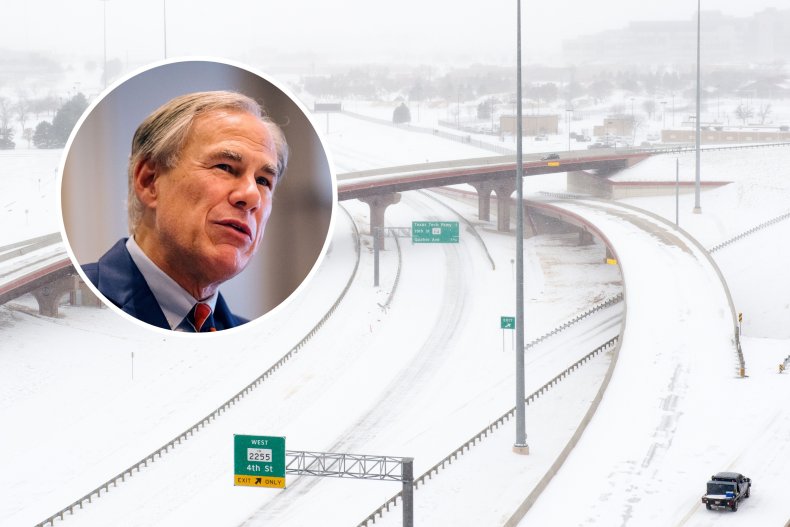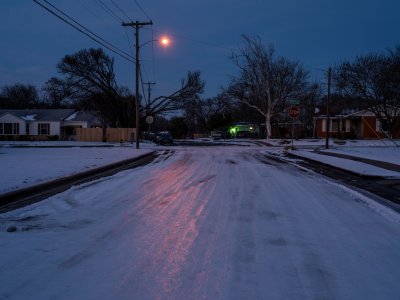UPDATES: Article Added 12/19/22 Travel Alerts and Snow and Freeze Warnings
It looks like this Arctic Blast is a reality. Much of the nation will have a WHITE CHRISTMAS they will likely never forget.
Advisories are warning everyone to prepare. Have lots of warm clothes, blankets, heating options, cooking options and plenty of water on hand. Charge up all your batteries, cellphones and radios. I suggest you also have some entertainment options on hand. Board games, reading material, needle craft, puzzles, etc. Something to pass the time, your internet and TV will likely not be working and if you can keep your cellphones charged you will need them for communication.
It is VERY LIKELY that some or even ALL of the GRID will go down. If this is part of the plan, which I suspect it may be, then they are going to try to freeze us out.
I strongly urge everyone to get as close to God as possible. He is our hope, our protector and our provider. If you are a child of GOD you are covered!! Trust HIM.
We can ride this through, with the Help of the Lord!!spacer
‘Big mess’ is days away: Major winter storm to bring snow, arctic temps and travel headaches
Bitterly cold temperatures and a significant winter snowstorm could threaten holiday travel plans for millions across the U.S. from the Plains to the Eastern Seaboard.
This week’s blast of frigid air comes as an earlier system winds down after burying parts of the Northeast under 2 feet of snow.
The U.S. may experience “the coldest air of the season” as a strong arctic front marches across the eastern two-thirds of the country days before Christmas, according to the National Weather Service’s Weather Prediction Center.
“I have to imagine we’re going to be pretty darn close to low-temperature records in a lot of the Northern Plains,” AccuWeather senior meteorologist Adam Douty told USA TODAY.
Here’s what to know about the frigid week ahead.
What regions will get hit with snow, chilly temps?
The storm’s greatest impacts will affect the Great Plains region over to the east, according to Douty.
“Pretty much everyone, at least east of the Rockies, is going to feel the effects of it in one form or another – whether it’s rain, snow, wind or colder temperatures,” Douty said.
16 BILLION-DOLLAR DISASTERS: How the US was impacted by weather in 2022
The storm is expected to result in mostly rain and wind across the Ohio Valley and along the East Coast in cities such as Washington, D.C., New York City, Philadelphia and Boston on Thursday and Friday.
“By the time the cold air gets to the East Coast, it looks like a lot of the moisture is going to be gone, and when the rain ends, the cold air comes in,” Douty said, adding that the eastern cities shouldn’t anticipate a snow threat.
What’s the timing of the cold, snowy conditions?
Forecasters expect snow to fall across the Northern Rockies on Tuesday into Wednesday. The most significant impacts are expected later Wednesday night as cold air dives south across the Plains. South Dakota, Nebraska, Kansas and Colorado are likely to receive “a little batch snow” late Wednesday followed by frigid temperatures, according to Douty.
“Especially once you get outside the Midwest where they’re going to see heavy snow, the temperature drop across all of the eastern U.S. is going to be 20 to 30 degrees from one day the next after this storm goes through,” he said.
An exceptionally cold air mass over western Canada that is pressing south toward warmer air is causing the anticipated temperature drops the first half of the week over the majority of the lower 48 states, according to weather experts.
WHAT’S THE DEW POINT?: What is the dew point? Understanding how it differs from humidity
AccuWeather forecasters predicted the Central Plains, Nebraska and Kansas would experience the heaviest snow, while Chicago could see up to 6 inches of snow from Thursday to Friday.
As the storm moves east, strong widespread winds 40 to 50 mph could pick up across the Central Plains and Midwest into the Great Lakes and Ohio Valley, leading to blizzard conditions for areas expecting heavier snow later in the week, Douty said.
Should pre-Christmas travelers expect delays?
Travelers flying or driving home for the holidays can expect a “big mess” across much of the eastern U.S. in the days leading up to Christmas, according to Douty.
“There could be massive delays flying in and out of the East Coast and those could trickle even to the West Coast, so places that aren’t (getting the storm directly) could see travel impacts rippling across the country,” Douty said.
WHAT IS THUNDERSNOW? Explaining how a thunderstorm can produce snow
Blizzard conditions from Thursday into Friday could cause travel headaches for drivers in the Midwest amid potential road closures, particularly across parts of Iowa, northern Missouri and parts of Wisconsin and Illinois, he said.

A crew from A’s Auto and Truck Repair in Guilford helps clean up one of the two three-vehicle crashes along Route 30 in Jamaica, Vt., during a snowstorm on Friday, Dec. 16, 2022
spacer

Dec. 18 (UPI) — Confidence continued to grow among AccuWeather’s expert team of meteorologists on Sunday that a significant storm would evolve later this week, threatening to bring a wide swath of snow, rain and fierce winds from the Plains to the Atlantic Seaboard.
The intensifying storm will coincide with a surge of frigid air that will send temperatures to bone-chilling levels through the holiday weekend and could be one of the most intense and prolonged periods of Arctic air in decades during Christmastime. The plummeting temperatures with the storm could also lead to concerns of a rapid freeze-up.
Snow during at least part of the storm is likely to extend from parts of the southern Plains to the Midwest, Northeast and perhaps even the interior Southeast states during the period from Thursday, to Saturday.
The first stage of the storm can cause snow to break out as early as Wednesday across the interior West, with Denver expected to pick up several inches of accumulation Wednesday night.
AccuWeather’s team of long-range meteorologists, led by Senior Meteorologist Paul Pastelok, not only looks at computer models but also examines existing global weather patterns, known as teleconnections. The team has been keeping a close eye on the potential for this storm and the geographical area at risk since the start of December.
“At this time, there is every indication to believe that a major storm will unfold and track from somewhere over the South Central states to the Northeast,” Pastelok said.
The track is key to which areas end up with the heaviest snow, but confidence is also growing that even a small or moderate amount of snow when combined with plunging temperatures and strong winds will lead to a quick freeze-up and slippery travel from parts of the lower Mississippi Valley to the Midwest and Northeast states.
This means that cities such as St. Louis and Nashville, and perhaps as far south as Dallas and Atlanta could be looking at some snow, as well as the more traditional wintry trouble spots farther north such as Chicago, Detroit and Pittsburgh.
“This is the type of setup that can lead to ground blizzards in parts of the Central states,” AccuWeather Senior Long-Range Meteorologist Joe Lundberg said when he considered the potential storm’s intensity, the arrival of Arctic air and the wide open terrain in the region.
“This storm will likely become intense, feeding on the extremely sharp variation between the surging arctic air arriving from the Central states and relatively warm air across the Southeastern U.S.,” AccuWeather Chief Meteorologist Jon Porter said. “Major East Coast storms over the decades have occurred in this type of setup, bringing the risk for heavy snow and rain, gusty winds, coastal flooding, severe thunderstorms and even tornadoes on the southern side of the storm.”
AccuWeather’s Chief On-Air Meteorologist Bernie Rayno has summarized the major impacts of the coming storm and cold this week.
One such key component will be the complex structure of the storm. For example, one storm center may track toward the Great Lakes and a second storm center may form over the Appalachians or right along the Atlantic coast late this week. This could allow for hazardous winter weather to develop over an especially large area, making impacts around the Christmas holiday even worse.
The secondary storm formation could be a determining factor in the primary form of precipitation expected in the major metro areas of Washington, D.C., Baltimore, Philadelphia, New York City and Boston. At this time, at least some snow or a wintry mix are still on the table for these locations for part of the storm.
“The exact track of the storm will dictate which areas receive heavy snow versus heavy rain and the most significant impacts, but people and businesses in the eastern U.S., especially those traveling, should be extra alert and frequently check AccuWeather forecasts this week to stay updated on expected impacts,” Porter added.
Even locations on the warmer east side of the storm may not be entirely out of the woods when it comes to wintry weather. With Arctic, frigid air quickly spilling in, temperatures may drop sharply as the storm is ongoing, potentially changing any rain over to snow. Just when and where this occurs depends on the storm’s exact intensity.
For those who find themselves with some added flexibility in terms of available time for travel or shopping, forecasters say it could be advantageous to adjust certain plans before the storm’s peak impacts late this week and into the Christmas weekend. The storm’s enormous scope and intensity have the potential to leave people stranded on the highways and at the airports. Even if an airport is not in the storm’s primary target zone, delays at other travel hubs could cause a cascading effect in case aircraft and crews become displaced.
While the storm may initially delay the arrival of very cold air along the Eastern Seaboard, the frigid air is likely to plunge southeastward in the storm system’s wake. Those who will be away from home around Christmas may want to take precautions to avoid having their pipes freeze and potential water damage even in portions of the interstate 20 and 10 corridors of the South Central and Southeastern states, experts say.
AccuWeather’s team of more than 100 meteorologists will continue to fine-tune the forecast for this emerging storm system in the days ahead.
spacer
END OF UPDATES
How harsh will winter be? Six organizations issue forecasts.
2022-23 Extended Winter Weather Forecast

Winter—It’s Coming!
The first day of winter and the shortest day of the year, officially arrives on December 21, 2022, but that doesn’t always mean that the cold temperatures and snow storms will wait until then. So what’s in store? Here’s the Farmers’ Almanac extended winter weather forecast for the winter of 2022-2023 in the United States. Read on.

The Farmers’ Almanac 2022-2023 Extended Weather Forecast:
Got flannel? Hot chocolate? Snowshoes? It’s time to stock up! According to our extended forecasts, this winter season will have plenty of snow, rain, and mush—as well as some record-breaking cold temperatures! We are warning readers to get ready to “Shake, shiver, and shovel!“
The first bite of winter should come earlier than last year’s. December 2022 looks stormy and cold nationwide with an active storm pattern developing and hanging around for most of the season over the eastern half of the country. (Maybe there will be a white Christmas in some areas?)
Winter Storm Warnings
What we hear more often than not is how much snow will you get? When will the winter storm warnings start? (And when will it end!?) Well, according to our extended forecast, there should be quite a few significant winter weather disturbances nationwide in 2022-2023. A few of these dates include:
1) The first week of January in the Rockies and across the Plains. During this time, we see good potential for heavy snow that may reach as far south as Texas and Oklahoma, followed by a sweep of bitterly cold air.
2) January 16-23, we’ll raise another red flag for bouts of heavy rain and snow across the eastern two-thirds of the country followed by what might be one of the coldest outbreaks of arctic air we have seen in several years. How cold? Try 40 degrees below zero!
Check out our 20 Best Life Hacks To Get You Through Winter

How Much Snow Will You See This Winter Season?
Winter 2022-2023 should be dominated by an active storm track in the eastern half of the country, running from the western Gulf of Mexico to the northeast, across the Virginias, and across interior New York State and New England.
Areas south of the storm track (much of the Southeast) will see frequent storms bringing cold rains and a wintry mix of wet snow, sleet, ice, freezing rain—as well as chilly temperatures.
The I-95 corridor can be included in this winter mix zone with places to the north of the track seeing the precipitation fall more as snow and at times, a lot of it. This may be especially true over the Ohio Valley and Great Lakes area.
Snow lovers will be happy in the North Central States as they will see a fair share of storminess during the winter season, which should mean plenty of snow for winter enthusiasts to enjoy (maybe even in time for a white Christmas?).
The South Central States are forecast to see some accumulating snow, especially in early January. The Far West and the Pacific Northwest will see about-normal winter precipitation; however, the Southwest will experience less than normal.

Winter is coming, and U.S. forecasters are predicting the extreme drought that is affecting more than half of the country will continue, especially in the West.
According to the National Oceanic and Atmospheric Administration’s winter outlook, which was released Thursday by the National Weather Service, La Niña — a weather phenomenon caused by the natural cooling of seawater in the tropical Pacific Ocean — will return for the third consecutive winter.
The climate pattern affects the position of the jet stream, resulting in dry conditions in the southern half of the country and wetter conditions in the northern half. It’s the opposite of El Niño, which occurs when water in the Pacific Ocean is warmer than average.
NOAA’s US 2022-23 Winter Outlook Maps
Widespread extreme drought, which continues to persist across much of the West and Great Plains, will continue with La Niña in place.
“Parts of the Western U.S. and southern Great Plains will continue to be the hardest hit this winter,” said Jon Gottschalck, operations chief of NOAA’s Climate Prediction Center. “With the La Niña climate pattern still in place, drought conditions may also expand to the Gulf Coast.”
However, drought conditions are expected to improve across the Pacific Northwest over the coming months — welcome news for people in Oregon and Washington who are choking on wildfire smoke that has covered the region.
NOAA’s winter outlook calls for warmer-than-average temperatures for the South and Southwest and wetter-than-average conditions for areas of the Midwest, northern Rockies and Pacific Northwest.
The greatest chances for warmer-than-average conditions are in western Alaska, the central Great Basin and the Southwest, extending through the southern Plains, forecasters say, while wetter-than-average conditions are most likely in store for western Alaska, the Pacific Northwest, northern Rockies, Great Lakes and Ohio Valley.
The seasonal outlooks are meant to provide American communities with a rough guide for temperatures, precipitation totals and drought conditions for the 90-day period.
The winter outlook does not project seasonal snowfall accumulations, as those forecasts are “generally not predictable more than a week in advance,” NOAA said.
spacer
Arctic dome settles over most of United States, bringing bitter cold
A cold blast could have rampant effects across the country

Kristin Murphy, Deseret News
A blast of Arctic air is going to engulf the lower 48 states, dropping temperatures as much as 30 degrees below average.
No region is being spared, including the usually temperate South, the Great Plains and the Pacific Northwest.
The brunt of the blast is expected to arrive Dec. 21 and linger through Christmas, dropping temperatures into single digits or even below zero, according to weather.com.
Ahead of the extreme cold, some regions will be dealing with heavy snow, including the Northeast and the Great Lakes areas.
Homeless suffer: In Sacramento, the bone-chilling cold is driving the homeless into shelters in numbers officials say they have not seen before.
In all, the county has been assisting nearly 400 people a night for the past three weeks. It’s the most people they’ve had during a weather activation by far, according to KRCA.
“The fact that there are more people unsheltered on the street definitely means that there are more people that need these services and I think that the duration of this cold weather event also plays a part,” said Sacramento County’s Janna Haynes who works with the Homeless Initiatives division, as quoted by KRCA. “We’re seeing seven, eight, nine days where the temperatures overnight are really low.”
Since 2020, the Sacramento County Coroner’s office has recorded 14 hypothermia-related deaths among homeless individuals.
Industry preparing: The cold snap also has industry on its heels.
The Railroad Commission of Texas issued a warning on Thursday to oil and gas pipeline operators that next week will see “significantly colder temperatures.”
A statement from the RRC of Texas cited the National Weather Service, which is predicting periods of colder temperatures for the latter part of next week. The RRC is recommending that oil and gas pipeline operators monitor weather reports, and secure all personnel, equipment and facilities to prevent injury, as well as prepare operations for potential impacts.
In February 2021, Texas found itself woefully underprepared for freezing temperatures. When Texas temperatures dip as low as they did then, the state relies heavily on natural gas. But its natural-gas-fired power plants faced myriad problems such as components freezing, forcing some shutdowns, according to Oilprice.com.
The cold hit Utah on Thursday and will linger for a few days. The Salt Lake International Airport was logging 22 degrees Friday morning.
More storm activity is forecasted for next week, leaving people hopeful there might be a fresh, white Christmas after all.
spacer

Colder-than-normal weather is brewing and is expected to hit the U.S. over the course of the next 10 days.
An Arctic blast is moving eastward, and cold air is collecting from higher-than-average snowfall in Alaska and Canada. The blast has started to merge into the lower 48 states. Northwestern states have already been subjected to frigid temperatures, with parts of Idaho and Wyoming experiencing temperatures more than 20 degrees colder than normal, and the cold is expected to grow even more brutal as the blast fully enters the country next week.
The extremely cold air will hit Montana first next Wednesday and continue to move southeast. It will take roughly two days before it reaches Texas, and the lengthy swath of cold air will remain in the northern states as well.
The uncharacteristic frigid temperatures have some Texans worried whether the power grid will be able to withstand the high demand. In February of 2021, three severe winter storms crippled the Texas power grid, pushing electricity offline for millions for several days as power organizations worked to remedy the issue. The Electric Reliability Council of Texas (ERCOT) declined an interview with Newsweek but said it is “monitoring the forecast and models closely.”
“[ERCOT] will deploy all available tools to manage the grid reliably,” ERCOT said in an email. “ERCOT expects sufficient generation to meet forecasted demand at this time.”
Texas will experience the uncharacteristic cold air for only a few nights, according to AccuWeather Chief Meteorologist Jonathan Porter. It is not likely that the extreme cold will be accompanied by snow or ice, meaning the power grid has a better chance of persevering. Although any extreme cold is a test to the Texas power grid, Porter said the shorter timeframe of cold likely won’t stress the grid as much as in February of 2021. However, he warned people to be prepared.
One forecast predicts that the Texas’ panhandle and north-central cities in the state will receive the worst of the cold blast, with temperatures falling as far as 30 degrees below normal. That means some areas might plunge into single digits.
“It’s going to be a notable change for Dallas and Fort Worth,” Porter told Newsweek. “They have been running considerably above average in terms of temperatures, so dealing with this is going to be a big change.”
The stretch will last much longer in the northern states. According to a forecast model tweeted by meteorologist Brad Panovich this week, by the time the cold air reaches Texas next Friday, northern Plains states will have experienced the Arctic blast for nearly a week and won’t see temperatures rise until Christmas or the day after.
Montana, Wyoming, North Dakota and South Dakota will be hit the hardest. Some areas could experience temperatures more than 50 degrees lower than average. Porter said that could mean -35 to -40 degrees, potentially record-breaking cold in the Dakotas, Colorado and Wyoming.
As the blast moves eastward, it loses some of its potency once it hits Illinois. Central Illinois could experience temperatures as much as 36 degrees below normal. States east of Illinois will still feel the chill, with the forecast predicting Florida to see temperatures as much as 30 degrees below average for late December.
The blast is bookended by two warm periods, with slightly warmer-than-normal temperatures moving eastward from the Pacific Northwest beginning two days after Christmas.
The post Arctic Blast Will Hit These Areas Hardest as Texas Braces for Blackouts appeared first on Newsweek.
spacer
Blackouts Could Hit Texas on Christmas as Arctic Blast Threatens Grid
Texans could have a dark, cold Christmas if an Arctic blast headed east continues its path.
Texas suffered a massive power grid failure in February 2021 after three severe winter storms and frigid temperatures stressed the grid. The grid’s failure resulted in millions of Texans losing power, leading to a lack of food, water and warmth. The failure proved fatal, and hundreds died because of the outage. The failure dealt a blow to the economy as well, resulting in a loss of at least $195 billion.
Since the 2021 power grid failure, other uncharacteristic storms have hit the Lone Star State, but none have threatened the grid to the same extent. According to one meteorologist, that could change by Christmas.
WCNC Meteorologist Brad Panovich shared a forecast depicting temperatures for the next two weeks. Much of Texas will be subject to much colder than normal temperatures for several days over Christmas.

“The bigger story going forward is the Arctic blast that moves into the west first then pushing east for Christmas,” Panovich tweeted. “The Texas Grid is going to be tested again.”
The bigger story going forward is the Arctic blast that moves into the west first then pushing east for Christmas. These are departures from average. The Texas Grid is going to be tested again. #cltwx #ncwx #scwx #wcnc pic.twitter.com/IpFvd011fL
— Brad Panovich (@wxbrad) December 13, 2022
spacer
The forecast shows Texas experiencing a quick cold blast with temperatures as cold as 17 degrees lower than the average before returning to normal on December 19. Texas is expected to be hit with a warm spell roughly three days before Christmas, but the temperatures plunge beginning December 23 and continue to dip through Christmas.
The entirety of the state is expected to have colder than normal temperatures, with northern Central Texas subject to the coldest temperatures as low as 30 degrees colder than the state’s average. Temperatures begin to ease after Christmas, but the state could still be subject to temps that are 14 degrees lower than the average for late December.
In 2021, the grid was pummeled by frigid temperatures, ice and snow, making it an especially dangerous environment for the southern state. In the days leading up to Christmas, AccuWeather Chief Meteorologist Jonathan Porter expects the storms to miss Texas on the days that frigid temperatures are felt throughout the state, but it’s something the weather team is watching closely.

“There’s going to be a notable surge of arctic air into Texas and it will be very chilly,” Porter told Newsweek. “Single digits will be achieved some nights as far south as the suburbs of Dallas.”
The extreme cold is only expected to last for one or two nights in Texas, which might allow the power grid to continue operating since the cold likely won’t be accompanied by damaging storms forecasting ice and snow. However, Porter said the cold temperatures do stress the grid, and the upcoming cold nights will reveal how resilient the grid is to cold temperatures.
After the February 2021 failure, Harvard Kennedy School faculty spoke with energy expert Bill Hogan and sought answers to why the grid struggled during the severe weather. Hogan responded that the storms caused low temperatures statewide, which was an “unusual event”.
“When the problem is large enough or everywhere is in trouble, the same instantaneous response can propagate the damage and produce a total system failure,” Hogan said.
KUT radio station in Austin, Texas, published an article last month that acknowledges if the state falls victim to uncommonly severe winter storms and temperatures such as those experienced in February 2021, the grid could experience a repeat failure.
The report provided information from the Electric Reliability Council of Texas’ quarterly Seasonal Assessment of Resource Adequacy, which found under the “most extreme conditions”, there could be a lack of power again.
Over the summer, when heat records were set in the state, Abbott’s press secretary, Renae Eze, told Newsweek this about Texas’ power grid: “Since May, Texas has set and broken power demand records 26 times without any systemwide issues or disruptions for the more than 26 million Texans served by the electric grid.
“The ERCOT power grid has been able to meet those challenges and respond in record ways, providing more power than ever before and doing so more efficiently, in large part because of the reforms passed last session and the increase in power generation by more than 15 percent over last year.”
spacer
Historic Christmas Cold Wave, Winter Storms for Much of the U.S.
941 subscribers
Josh’s Severe Weather discusses the attack of the coldest air in many winters next week, along with the possibilities for winter storms from coast to coast, leaving the potential for some Southerners to have a White Christmas!
This Christmas snow storm just ramped up to a potential major snowfall in the South, potential ice storm in the South also and maybe a Bombogenesis Nor’Easter in the Northeast. Get your discount on your Weather Station here https://shop.weatherflow.com/?ref=n4B… Makes a great gift! Join this channel to be a part of feeding families every month Thank you for helping another. You can support through: My Patreon https://www.patreon.com/weathermanplus Pay-pal at https://www.paypal.com/donate/?busine… Cashapp me at https://cash.app/ my name is $weathermanplusMark or email me for my home address at kidsgamingtoday@gmail.com . Thank you for your support Follow me on Facebook https://www.facebook.com/mark.gremill… Follow me on Twitter https://twitter.com/WeathermanPlus This Huge Christmas Snow Storm Just Got Serious!! – The WeatherMan Plus https://youtu.be/5lUeiLWOXyA #WeatherChannel #hurricane #Landcane #severeweather #tornado #tornadoOutbreak #flooding #majorsnow Live storm media channel https://www.youtube.com/user/LiveStor… NWS warnings https://www.weather.gov/ GOD bless you for supporting my channel, Click the LIKE if I helped you today.. K-LOVE MUSIC PLAYER https://listen.klove.com/ Other Sources: Severe Weather 101 https://www.nssl.noaa.gov/education/s… Climate Prediction Center https://www.cpc.ncep.noaa.gov/ USA Power Outages https://poweroutage.us/ National hurricane center https://www.nhc.noaa.gov/



